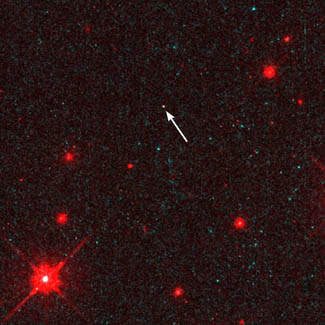
After the type II supernova, only the collapsed core is left behind. If it's less than 2 or 3 solar masses, it is what's known as a neutron star, named thus because it's made almost entirely of degenerate neutrons.
Neutron stars are really dense. They have between 1.4 and 3 times as much mass as the Sun, but are compressed into a ball with a radius of about 10 km. (Smaller than the Bay Area.)
They were predicted to exist in the 1930s, but weren't discovered until 1967.
A graduate student named Jocelyn Bell was monitoring radio wavelengths from space. She discovered a really regular signal. At first, no one could believe that anything natural could produce such a regular, repeating signal. The source of the radio signals was dubbed "LGM1". (Little Green Men)
However, several more regular radio repeaters were discovered. Astronomers finally deduced that they were observing very rapidly rotating neutron stars -- pulsars.
As something spinning collapses, it spins faster. Watch an ice skater spin faster as he/she brings his/her arms inward, and you'll see this. This is because angular momentum must be conserved. Since neutron stars are very compact, they also spin very fast.
Neutron stars also have very intense magnetic fields. Charged
particles move around these magnetic fields, which are most intense
around the magnetic poles. These charged particles, streaming around
the magnetic field lines, emit radio waves. As the pulsar rotates, it
makes the neutron star act like a kind of giant "light house." Every time
the beam of the radio emission is pointed right at us, we see a "pulse."
Since the neutron star is spinning at a constant rate, the amount of time
between each pulse is the same. That's why the pulse is so regular.